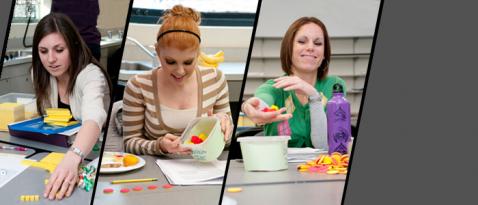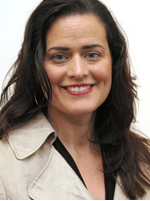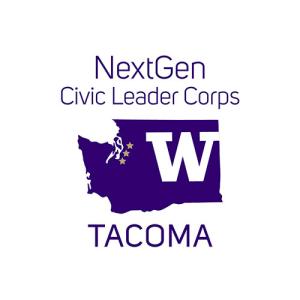Making math meaningful is key to reaching students
National Science Foundation awards $3.5 million to prepare math teachers for diverse classrooms.

Washington’s increasingly diverse K-8 schools present a particular challenge for math teachers: how to help students from different mathematical, cultural and socioeconomic backgrounds — some of whom are learning a second language — to be successful in mathematics.
It’s clear that our schools are becoming more diverse. Nationally, racial and ethnic minority youngsters constitute 43 percent of public school students. Twenty percent of students in grades K-12 speak a language other than English at home. That number is expected to reach 30 percent within three years.
Here in Washington, enrollment has tripled in the state’s Transitional Bilingual Instruction Program (TBIP) for students whose first language is not English. Washington public school students speak at least 200 different languages.
Spanish, by far the most prevalent language after English, is spoken by two-thirds of the state’s English language learners (ELLs), followed by Russian, Vietnamese, Ukrainian, Somali, Korean and Tagalog. Locally, students in Kent schools speak 102 different languages; students in Federal Way speak 81; and students in Tacoma speak 56.
Our state is looking for ways to improve mathematics education and student achievement. While math standards and courses needed for high school graduation requirements have increased, Washington state’s student mathematics achievement continues to be a concern. For example, according to the Washington Office of the Superintendent of Public Instruction’s 2009-2010 Washington Report Card, only 51.6 percent of 8th graders and 41.6 percent of 10th graders passed the mathematics portion of the Measurement of Student Progress (MSP).

"Preparing teachers to meet the increasing mathematics and diversity demands of our schools is critical to improving mathematics achievement of our students," said Julia Aguirre, assistant professor of education at UW Tacoma and co-project investigator.
Taking into account the rigor of the content, how children learn mathematics and the richness of cultural and linguistic diversity students bring with them to the classroom could help teachers engage young students in mathematics and science.
That’s the idea behind a five-year, six-university project funded by the National Science Foundation to transform how we train K-8 mathematics teachers.
The TEACH MATH project, short for Teachers Empowered to Advance CHange in Mathematics, involves research faculty from the education departments of six universities across the nation: Iowa State University, University of Washington Tacoma, Washington State University Tri-Cities, University of Arizona, Queens College-City University of New York and the University of Delaware.
The National Science Foundation recently awarded $3.5 million to the TEACH MATH project to develop better ways to prepare new teachers to teach mathematics.
"We need to prepare good mathematics teachers to support an increasingly diverse student population, with special attention to groups historically underrepresented in STEM fields [science, technology, engineering, mathematics]," Aguirre said. "This is about preparing students to learn rich and rigorous mathematics and utilizing resources in the community and family to support mathematics learning and development."
Aguirre explained the project will ultimately help young people develop a stronger understanding of mathematics and confidence in their problem solving, "so they won’t hate math." When students can make sense of the mathematics, engage in interesting problems, and see the relevance in their lives, they are better equipped to tackle advanced mathematics and science fields.
"When a student asks, 'Why do I need to learn this?' teachers need to know how to make math relevant and interesting," Aguirre said. "They need to help students understand that math is a tool for understanding the world around us."
Beyond repetition and drills, Aguirre explained, teachers can pay closer attention to how students are thinking about a math problem and what strategies they are using. Teachers can help students recognize how they use math in activities that occur outside the classroom, such as games, cooking, measuring things or participating in a family business.
"It's not just about the procedures," she explained. "It's also about the ways students talk, think about and use math in and out of school."
Mathematics is not culturally neutral. Other countries use mathematics differently to solve problems, Aguirre explained. It's important for teachers to understand that a student's parents might use different measurement units or solve a division problem in a different way than is typically done in the United States. With this knowledge, teachers can open up opportunities to discuss similarities and differences among different mathematical approaches or help decipher a computational error a student might make.
The six researchers in TEACH MATH originally shared ideas about mathematics teacher preparation at a conference three years ago. Before receiving the NSF grant, the group worked for two years on a pilot program of new methods of training teachers.
The NSF grant supports the team’s research and development of modules and tools to help beginning teachers teach diverse students. It also allows the researchers to follow the teachers over time to see how their skills develop.
Corey Drake, Iowa State University professor in curriculum and instruction, leads the project. “The [NSF] funding pays for the technology and coordination across the six universities and for tracking these students as they go into teaching,” she said.
Aguirre said the new teachers will be able to take an integrated approach to teaching, right from the beginning, and use what they learn from TEACH MATH to make mathematics meaningful, relevant and rigorous for all their students.
“This helps teachers give students a foundation to do well in high school and beyond,” Aguirre said.
At the end of the five-year project, the team will share their findings and the tools they develop in a national conference.
Number of students from local school districts enrolled in Transitional Bilingual Instruction Program (TBIP)
- Tacoma: 2,327
- Fife: 391
- University Place: 138
- Bethel: 319
- Franklin Pierce: 574
- Highline: 3,974
- Federal Way: 3,136
- Clover Park: 1,337
- Bremerton: 144
- Kent: 4,521
- Seattle: 6,033
Source: Educating English Learners in Washington State, 2008-09 Report to the Legislature, December 2009, State Superintendent of Public Instruction



